A recent story in World Changing, about Free Internet for Conservation Efforts in the Amazon led me to have a long conversation with Marcelo Fortaleza Flores. We discussed how the arrival of internet access in remote areas of the Amazon could be empowering to indigenous communities. I will go over the the major points of this conversation later in this post.
Marcelo has been teaching photography and film making (Digital Media) to Amazonian indigenous peoples as well as to disenfranchised children in Africa since 1995. The photograph above is of Yanahin Wauja filming in Xingu Park, Brasil. Yanahin is an indigenous photographer and cameraman who is co-directing a project with Marcelo about the Wauja mask dance and its representation in Western cultures.
Anyone who has read Ugotrade before will know that the central question I am asking on this blog is:
How can we bring the social and economic benefits of Web 2.o and the rich collaborative, multidimensional potential of the next generation of internet development – virtual world development (aka Web 3.D) – to all communities across the globe?
The premise is that, this time round (the development of virtual worlds and Web 3.D ), the inequalities of the digital divide must not be replicated or made worse by high end access coming only to a privileged minority. Access to the coolest and best technologies should be for all, but especially for communities who missed out on the first round of the internet revolution, to open a new door to peace and prosperity .
Every post on Ugotrade looks at some aspect of this aspiration. So, if this is your first visit, you may want check the archive for the evolution of this discussion.
The conditions to break down digital divides have arrived!
Closing the Digital Divide, “is not a job for business or government but both……..not about bottom-up vs. top-down efforts but both (Digital Divide.org).”
Attitudes towards positive global development have changed as the New York Times noted yesterday. And, issues of sustainable development are on the corporate agenda, at last, see – “Businesses Try To make Money And Save The World.”
NYT describes Altrushare a brokerage firm “whose mission it is to support struggling communities with our profits.â€
like hundreds of new businesses starting up around the country, it is both. Altrushare is an example of the emerging convergence of for-profit money-making and nonprofit mission.
“there is a whole generation of people who’ve become extraordinarily wealthy as a result of the technological revolution and are now asking themselves if they can create change in the world†(R. Todd Johnson).
Metaverse Evangelists, Designers, and Architects
Are you sheep electric?, originally uploaded by Ian Hughes/Epredator from IBM and turned into a fake Wello Album, “a stern talking to/the storm was last year,” by wellohorlds. To learn more about, “the real life of a metaverse evangelist” go to epredator’s blog.
Virtual worlds are fast proving themselves the killer app. of broadband. Justin Bovington of Rivers Run Red, an advertising and events company that works in Second Life writes:
“I think one of the things is that the collaborative space [of virtual worlds] is so social and creative…..In addition there’s no doubt that broadband has been looking for its killer application.”
Virtual worlds have caught the attention of people and businesses around the world. There are not only new kinds of business model emerging from large enterprise corporations like IBM and Xerox as they begin to move in. But, new kinds of companies like Beta Technologies and the Electric Sheep Company are emerging from virtual worlds themselves.
And, futurists, and meta thinkers are introducing us to new ways of thinking about their possibilities. See Bruce Sterling’s talk about his visionary manifesto, “The Internet of Things,” on the Google campus. In “The Internet of Things: ‘What is a Spime?” Bruce Sterling explains Spimes and the role they play in solving the world’s greatest problem and need for sustainable development.
Last Friday, I went to a Real Life Meet Up with the Electric Sheep Company and friends held at Barcade, Brooklyn, New York. And, before Barcade became so completely packed with Brooklyn hipsters that I could no longer hear the names of people I was introduced to, I got to see just how interesting being around an emerging metaverse company can be.
I have already blogged, Jerry Paffendorf’s, ROA/Return On Awesome – the antidote to the habit of using outmoded concepts like ROI when thinking about virtual worlds. Paffendorf notes: “The currency we are using doesn’t know how to quantify what we are making.”
The Barcade meet up with The Sheep and friends was an opportunity to meet some of ESC’s metaverse friends, evangelists, architects, designers, developers, machinima makers and meta-thinkers in person. And, they are an interesting bunch.
Go to WelloHorld to see this “electric sheep company flickr photo annotated with mouse-over namey and roley goodness.” The digital divide of gender common to much of the tech world doesn’t seem as evident in the Sheep world. Among the Sheep and their many interesting metaverse friends I met at Barcade were Becky Carella (SL: Digi Vox), software developer and Sunny Cerchi, Virtual Architect/3D Artist (SL:Endira Udal), Rick Panganiban of the Click Heard Round the World who is also the author of, “E-democracy and the United Nations,” and Frank Dellario, Director of Machinima Production, Electric Sheep who was also involved, earlier in his career (like me), in commercial film production and special effects.
Ugotrade is part of a growing community of advocates for the role virtual worlds in positive global development in general, and developing countries in particular (see also Africa and Second Life, Zim Daily.) Up to now issues of broadband connectivity has been the biggest obstacle. But, increasingly, there is encouragement re issues of connectivity. (See Wiring the next Billion, connecting East and Southern Africa to the global broadband infrastructure, and now this free internet initiative by the Brazilian Government in the Amazon ).
The Explosion of Edtech on Second Life
As Andy Carvin, Internet activist, author, Edtech expert for learning.now points out edtech enthusiasts have started moving in Second Life in a big way. Carvin notes with excitement the launch of the Center for Advanced Virtual Education, or CAVE. In fact, there are so many educational initiatives in Second Life, I cannot begin to cover them in one post. But, there will be much more on this in future posts. And don’t forget the Second Life International Education Conference, May 25th, 2007.
Carvin has chosen an unusual avatar on SL. He is Abdi Kembla, who is modeled on a former child soldier from Somalia: “I choose to experience SL through Abdi’s perspective because I’m interested in seeing how others perceive an African character in a world where everyone is usually white or some mythical being.”
But, things are changing fast in the demographics of Second Life. ComScore reported May 4th, “That ‘Second Life’ has a Rapidly Growing and Global Base of Active Residents,” and only 19% of residents come from North America, where Second Life started.
And, with the recent launch of Second Life Brasil, the arrival of Second News! Brasil, Europeans may not be majority (61%) on Second Life for long. Recently, I noticed that Capoeira clothing was already being sold on SL. And, I assume we will be seeing more of Capoeira – the African Brasilian martial art/dance/culture on Second Life Brasil. This liberation culture that originated in Africa and remained outlawed during slavery, and until the late 1950s, has become immensely popular in Brasil and around the world. To see a video of the two legendary Mestres (Joao Grande and Joao Pequeno) playing the traditional form of Capoeira Angola in Real Life go here and to see a clip of Mestre Joao Grande in Sidney Pollack’s. The Interpreter here.)
The Internet in the Amazon as a Channel For Culture.
The Brazilian government recently announced that they will make free satellite internet available to native Indian tribes throughout the Amazon region as a way to enhance monitoring, management and conservation efforts.
World Changing asks will the Internet “strengthen tribal culture,” or “undermine the chances of cultural survival in the Amazon.”
a piece on the new development suggested conflicting views over whether networking tribes through the Internet would strengthen tribal culture by interlinking previously isolated people and allowing widespread environmental education, or whether the presence of technology and the Internet would undermine and ultimately degrade the chances of cultural survival in the Amazon.
But, in our phone conversation, Marcelo Fortelaza Flores explained his experience working in the Amazon leads him to believe such fears of the Internet undermining Indigenous culture may be ungrounded. Rather, internet access in remote regions, as well as contributing to environmental conservation efforts, could be a an important channel for indigenous culture. Marcelo pointed out:
Most of the communities that would be part of such an initiative in the Amazon have been using wireless radio and other technologies for several years. The problem has been typically that the technologies that reach these areas have been outmoded versions of what is available in more developed parts of the world.
This picture by François-Michel Le Tourneau is of Paulo Wakalitesu Nambikwara at the top of tree, getting reception for text messaging on his cell a village a hundred miles away.
Internet Access could bypass unscrupulous intermediaries in local economies
Even in remote areas of the Amazon, Indigenous people are already relating to world economies in order to sell their craft products and because of a world wide interest in watching indigenous culture and ritual. But, because there has been no way to participate in a wider economy without leaving their communities, up to now, traders from indigenous communities, like the Xingu, have been forced to leave their homes for long periods and travel to major cities like San Paulo. Not only do they have to deal with many often unscrupulous intermediaries. But, such trips are expensive and take them away from their families for long periods. And, these long absences, not only disrupt village life, but as the cities are expensive, they eat up what little cash is earned. Also, collectors use strategies to manipulate prices by keeping Indigenous people waiting in town without buying to get them to sell at a low price because they can’t afford to stay longer.
Cultural Activities and Rituals Cost Money.
Indigenous people are already in relations with regional economies but often little comes back to the community from a lot of effort. If more resources came back to the villages, and some of the unscrupulous actors could be avoided, indigenous communities would be in a better position to fund cultural activities and rituals that cost money to put on. Marcelo also pointed out that these rituals are often broadcast around the world on pay per view channels with indigenous communities making nothing or next nothing from their performances.
The Internet and Self Empowering Community Based initiatives
The “free internet for Amazon conservation” initiative can bring many benefits for indigenous communities in the Amazon if internet development is incorporated into self empowering community based initiatives. Marcelo pointed out how Indigenous communities in the Northern Amazon in particular, and increasingly in other regions, are very well organized. All communities have their own associations with different generations represented. These indigenous organizations are patterned after NGOs and have been working since the early nineties to link the complex politics of village life into the wider frame of government and civil society in Brasil.
Marcelo mentioned to me that as soon as connectivity allows, he will be working with these community organizations to set up virtual self-empowering, community based initiatives on the ‘net in the Amazon.
Tags: Second Life | Web 2.0 | Web 3.D | Amazon | Amazon conservation | Indigenous communities | metaverse | virtual worlds | virtual reality | digital divides | metaverse evangelist | global development | indigenous media | sustainable development | 4th sector | for benefit corporations | internet access | Xingu | Electric Sheep | Rivers Run Red | Return On Awesome | indigenous culture | Nambikwara | Brasil | Second Life Brasil | Capoeira | Mestre Joao Grande | Capoeira Angola | Virtual Education | Edtech | internet activism | Spime | Spimes | The Internet of Things | broadband | Altrushare |

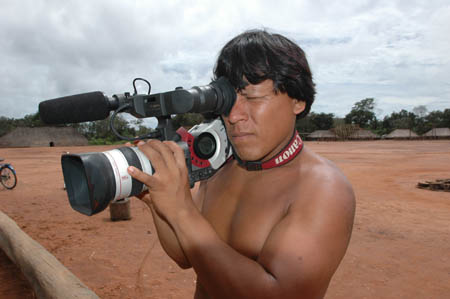

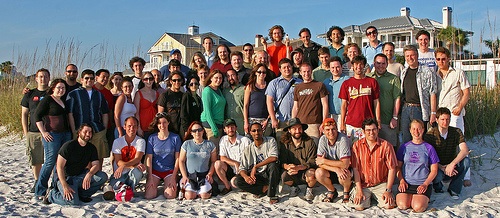

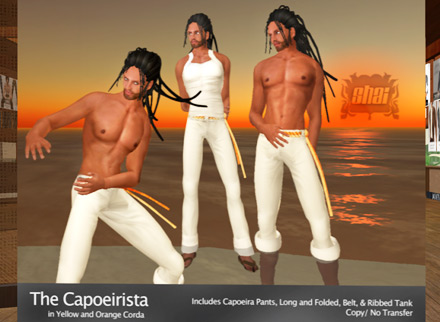
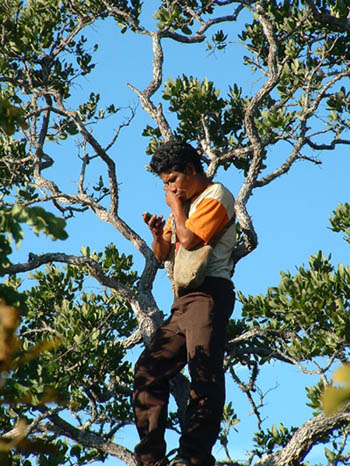
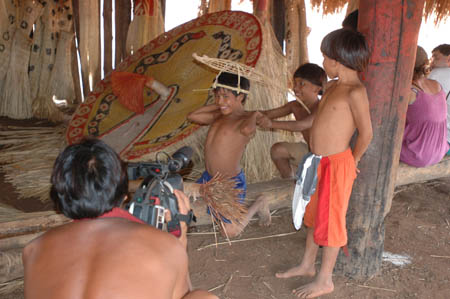
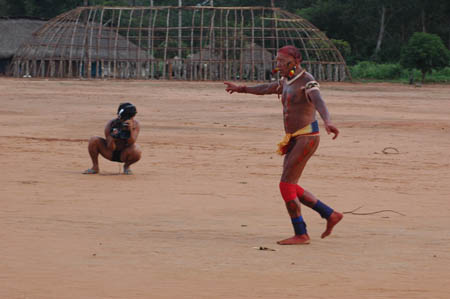
0 Comments For This Post
1 Trackbacks For This Post
May 12th, 2007 at 10:53 am
[...] UgoTrade Crossing Digital Divides – tracking innovative uses of technology in new environments. home « Virtual Amazon and Metaverse Evangelism [...]